Of Emus and Fairy-wrens - Rainforest FrustrationsText copyright Drew Fulton. All rights reserved.
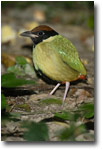
Photo 1
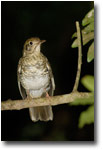
Photo 2
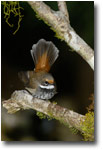
Photo 3
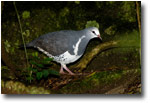
Photo 4
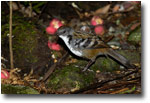
Photo 5
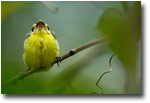
Photo 6
|
|
Before arriving in Australia I had never been in a rainforest, though it was something I had always dreamed about. I imagined a lush, damp jungle of sorts with large leaved plants, a maze of vines, and colorful birds flitting around just waiting for me to photograph them. Well, all I can say is that vision was only partly right. In reality, they are dark, chaotic places with lots of foliage and vines that do a fantastic job of obscuring the view of all the birds, some colorful and some not, that seem to constantly move around the forest floor or never leave the canopy high above. Photographically speaking, rainforests are quite a challenge.
I have spent a large portion of my time over the past few weeks in lowland tropical rainforest of the Iron Ranges on the Cape York Peninsula, subtropical rainforest in Lamington National Park, and a wide variety of smaller patches of varying types of rainforest throughout Queensland. I have seen a ton of birds and photographed a fair amount of them, but not without a good deal of frustration. First and foremost, finding the birds is difficult and finding them in a situation where you can get a lens on them is even tougher. Many birds never leave the canopy where trees provide an ample supply of fruits while others creatures seem to never leave the ground (Photo 1). Either way, it seems there is always a leaf, twig, or vine obscuring the bird.
Then there is the light, or lack of it. Rainforests canopy trees tend to have large leaves that block out a huge amount of light, leaving the forest floor and understory a rather dark place. I found that even with high ISOs and low shutter speeds, flash as main light basically became a necessity for the creatures of the interior forest. However, as all who have used flash know, natural looking images can be quite difficult to achieve when using flash as your main light source. Backgrounds tend to drop to black and while I may have a lovely photograph of a Bassian Thrush (Photo 2) or White-browed Scrubwren, the background is jet black and the image makes the bird appear nocturnal. Not exactly what I feel an image should portray for a diurnal bird.
Combine these two frustrations, the chaos and darkness, with my goals that I set out back in the August issue, namely the second one, to tell a story with each image and things get even tougher. How can I tell the story of these birds and the habitat where they live and still make pleasing images? For me, it turns out that it was a bit of a simple solution: embrace the chaos and the darkness. It is where these birds live and how people see them, so why should a photograph portray them any differently?
As I continued to wander the rainforests, I stopped looking for birds that were isolated from their surroundings, sitting on an exposed perch or what not, and began to try and include the chaotic habitat. This also had the wonderful effect of providing some foliage for the flash to illuminate and while many backgrounds still were dark, bits of green and brown began to break up the large swatches of black that consumed earlier images (Photo 3). This black background can be further reduced by photographing birds that have something relatively close behind them, quite the opposite of what I normally look for when trying to create a smooth, out of focus background (Photos 4 and 5).
I think one of the most successful images that I have created so far that embraces the concept of a chaotic rainforest is that of the fledgling Yellow-breasted Boatbill (Photo 6). This young bird, only having recently left the nest, was taking shelter among the dense foliage and vines, just a couple meters off the ground. It was impossible to isolate the bird so I chose to use the out of focus foliage that surrounded him as a frame. For me, the contrast in color and texture sets the bird off from the surrounding foliage and I was fortunate enough to be able to use a distant sunlit tree for the background to give it that extra “pop.” All of this came together in one of my favorite images of the year to date.
All in all, the rainforests of Australia have offered me a wealth of subjects and opportunities. In order to make successful images though, I have had to rethink some of my typical assumptions of what makes a good photograph and try some new strategies. Some worked, and some didn’t. I guess that is what this year is supposed to be about, seeing new places and stretching my mind and challenging those assumptions through which I view the world around me.
DF-NPN 0189
Comments on NPN nature photography articles? Send them to the editor.


| 


